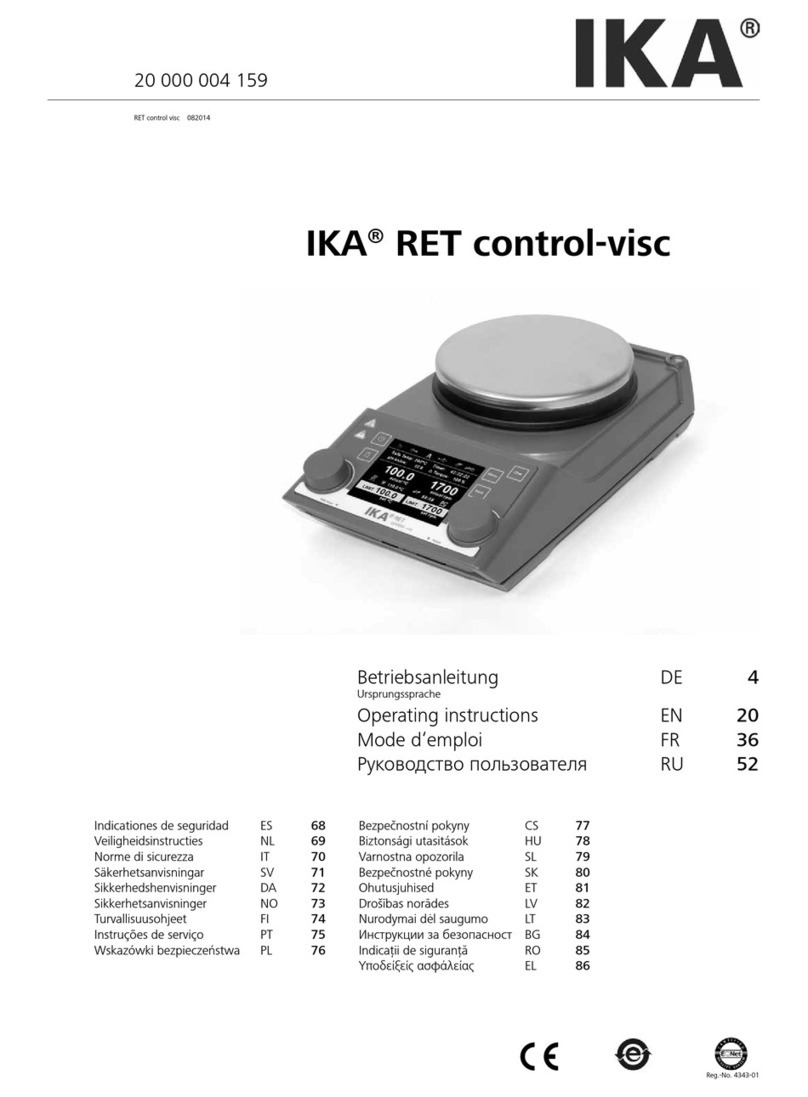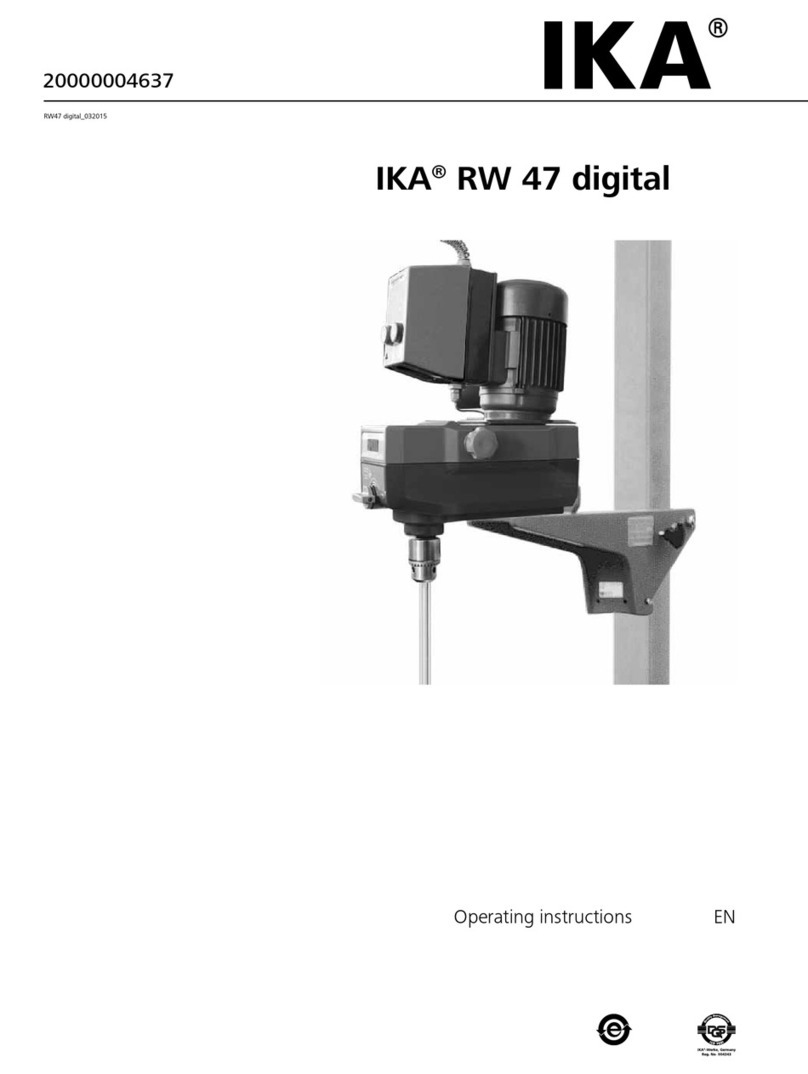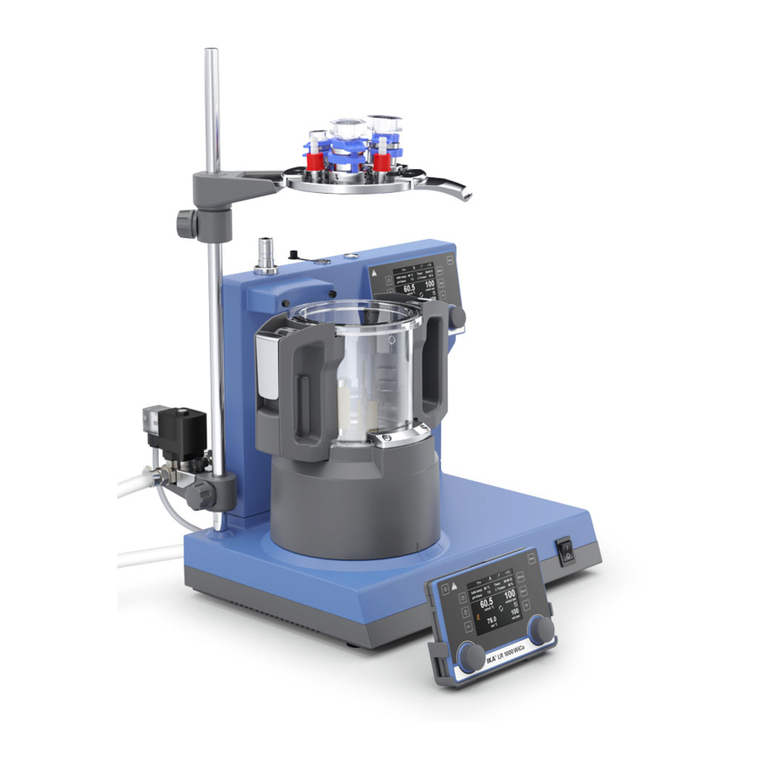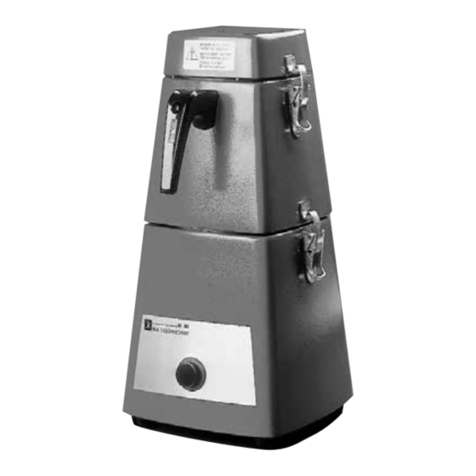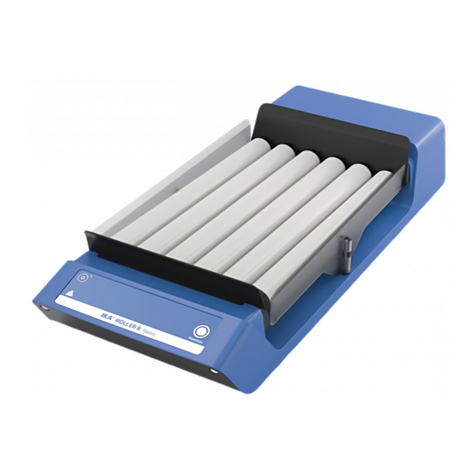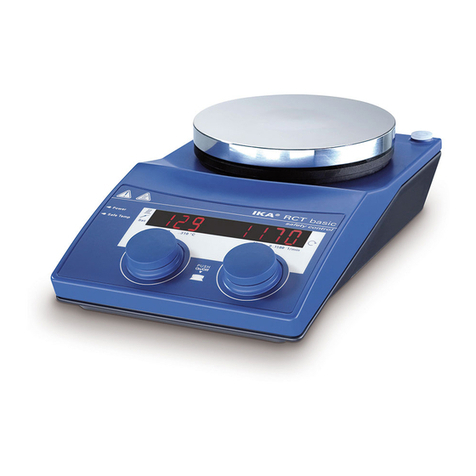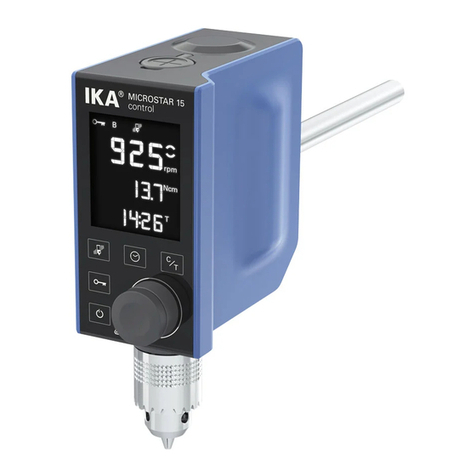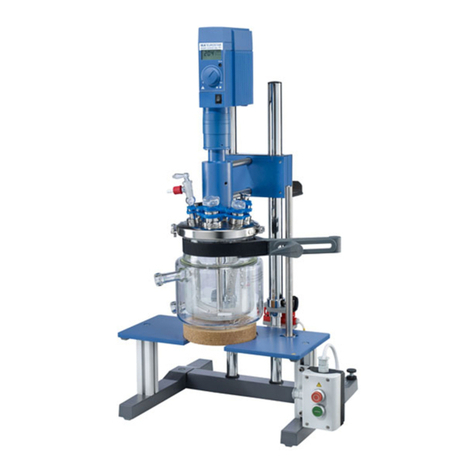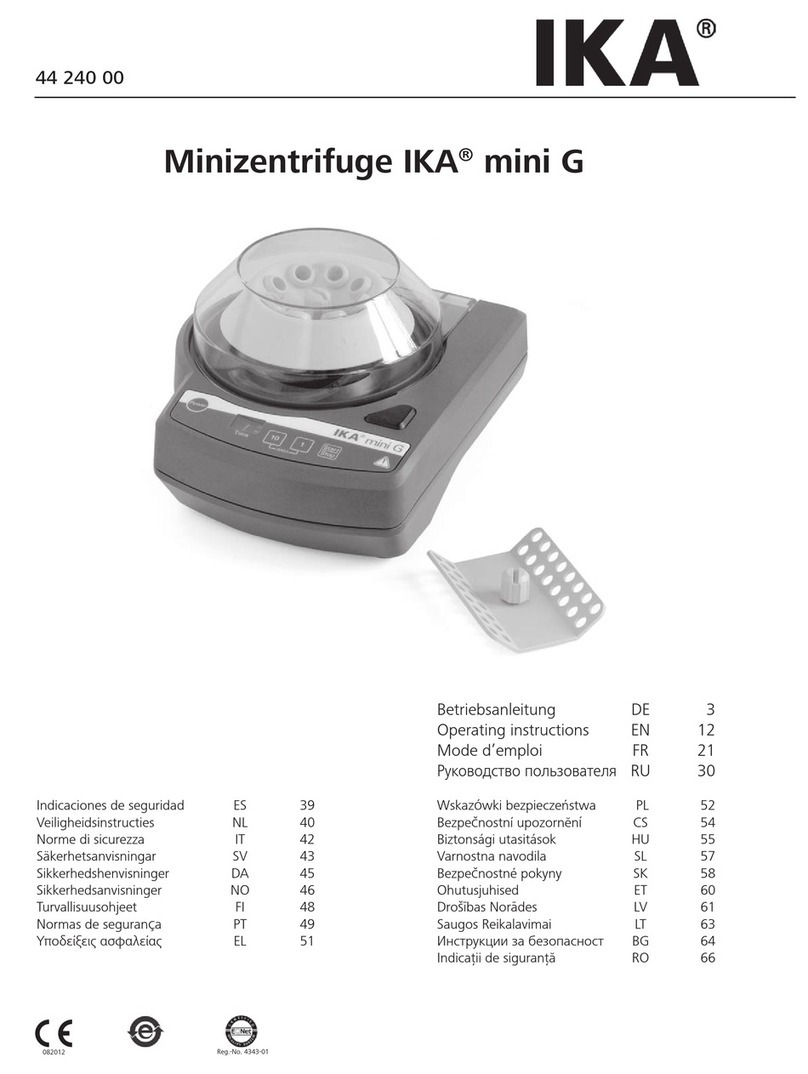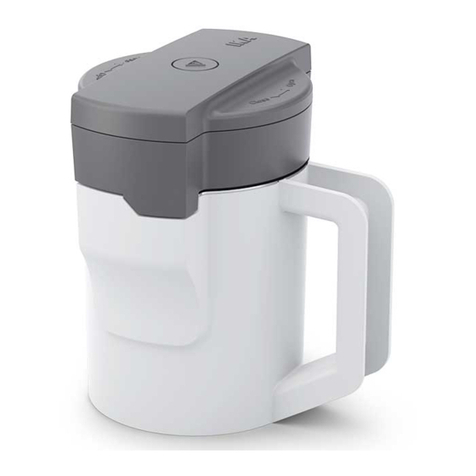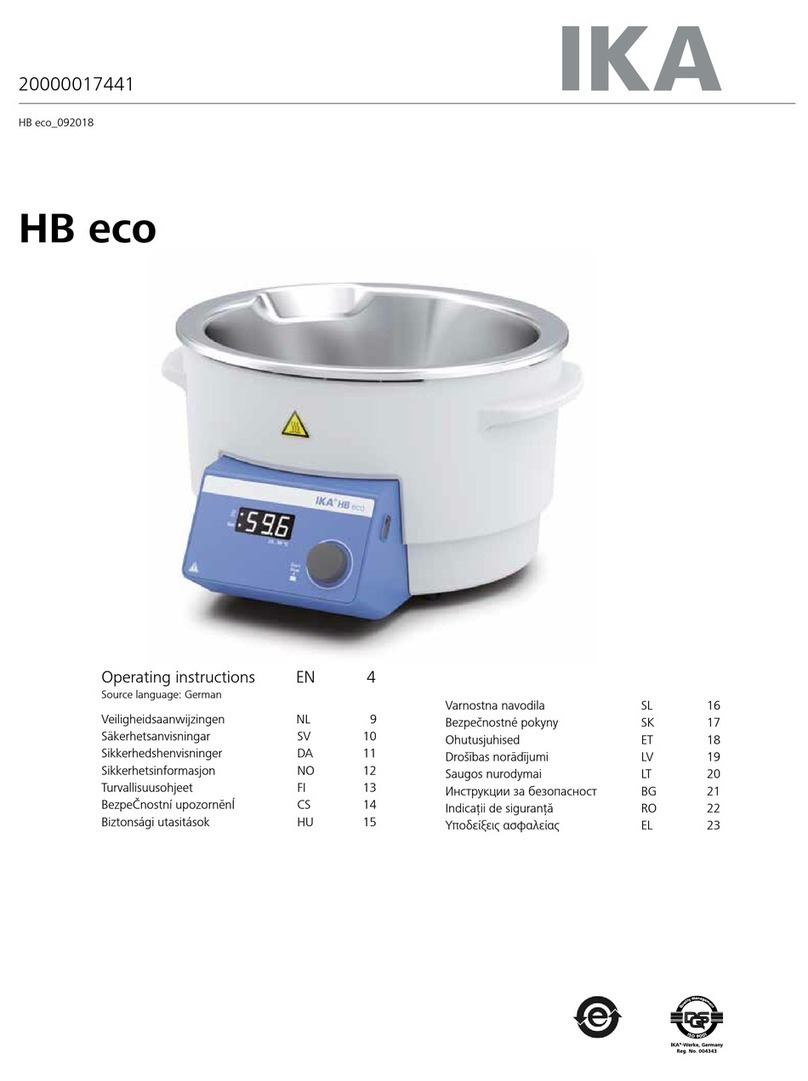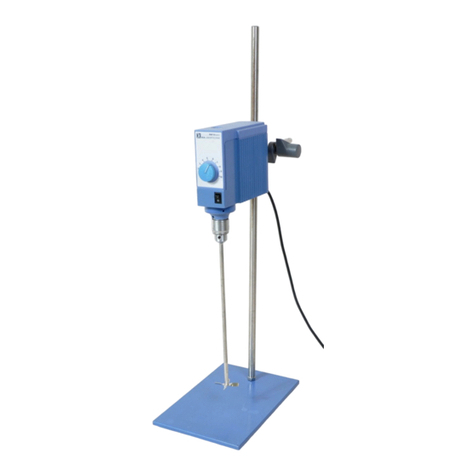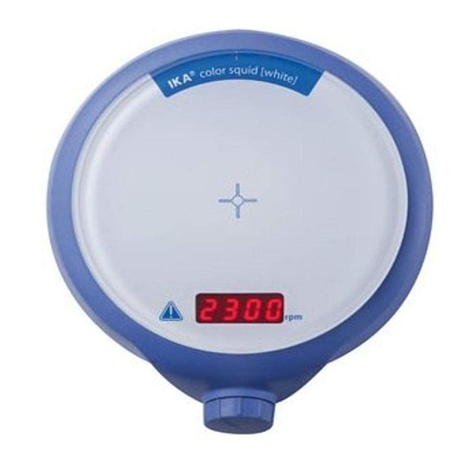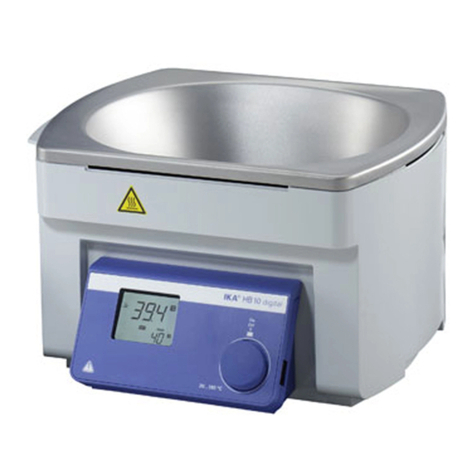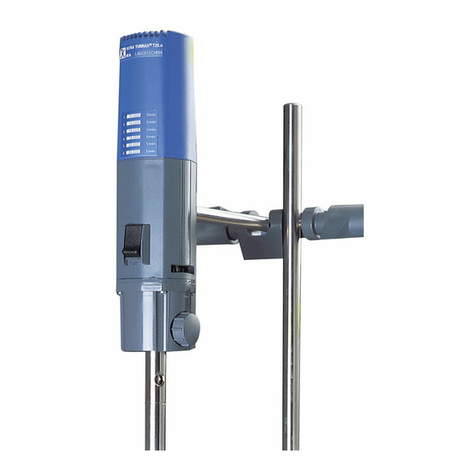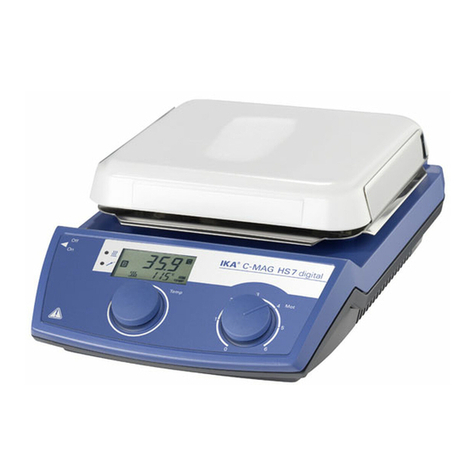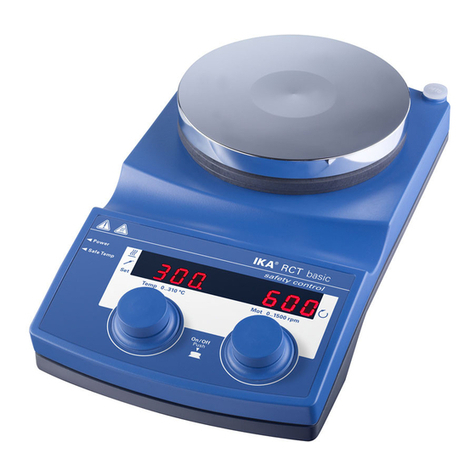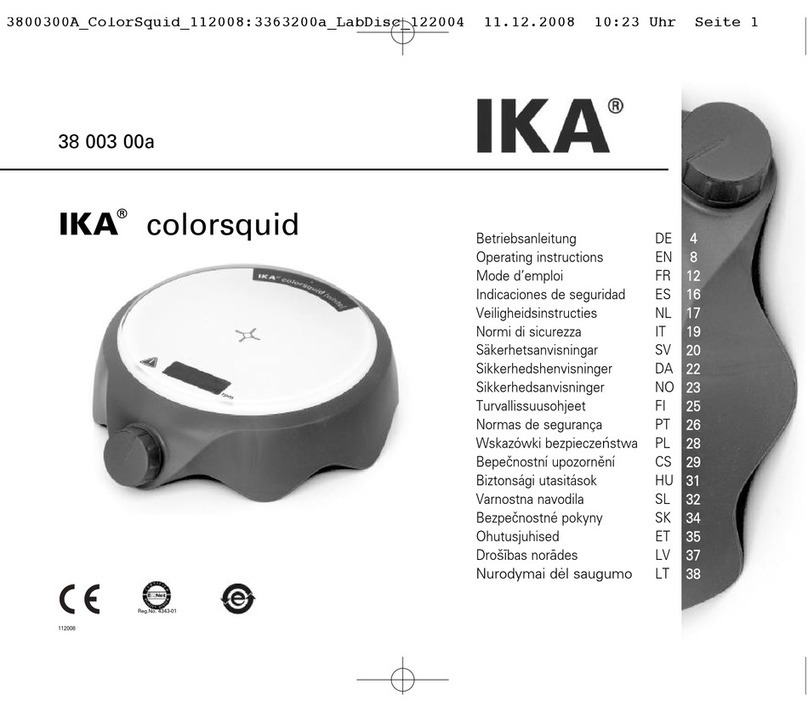
Das IKA LR2000 System ist ein modulares Miniplant Reaktorsystem. Es wurde für die Nachbildung und Optimierung von chemischen
Reaktionsprozessen sowie für Misch-, Dispergier-, und Homogenisierungsprozesse im Modellmaßstab konzipiert und ausgelegt.
Das Arbeitsvolumen beträgt 500 ml bis 2000 ml.
Aufgrund hochbeständiger FFPM Dichtungen kann das Medium von –10 °C bis 230 °C temperiert werden.
Der Vakuumbetrieb ist bis zu 25 mbar möglich (siehe Zubehör).
Durch Adaption des Drehmomentmessgerätes VK 600 control (siehe Zubehör) können rheologische Stoffeigenschaften, Fließ-
und Verformungsverhalten bewertet werden.
Ein umfangreiches Sortiment von verschiedenen, kombinierbaren IKA Laborgeräten eröffnet dem Benutzer vielfältige
Einsatzmöglichkeiten, sowie eine optimale Abstimmung auf spezifische Anforderungen.
Durch Kopplung mit der Laborsoftware “labworldsoft” steht dem Anwender ein leistungsstarkes System zum Messen,
Steuern, Regeln, sowie zur kompletten Dokumentation zur Verfügung.
•Die Laborreaktorgefäße LR 2000.1 und LR 2000.2 dürfen nur über den Doppelmantel mit Thermostaten bzw. ver-
gleichbaren Wärmequellen und geeigneter Temperierflüssigkeit drucklos aufgeheizt werden! Die Beheizung mit
anderen Wärmequellen ist nicht zulässig! Berstgefahr!
•Prüfen Sie vor jeder Verwendung Gerät und Zubehör auf Beschädigungen. Verwenden Sie keine beschädigten Teile.
•Vermeiden Sie Stöße und Schläge auf Gerät oder Zubehör.
•Bei Arbeiten unter Normaldruck muss das Reaktorsystem immer belüftet sein, um einen Druckaufbau durch leicht
flüchtige Gase bzw. unbekanntem Druckverlauf der Reaktion zu verhindern. Kondensieren Sie flüchtige Gase an
einem Kühler mit Kegelschliff (z.B. Rückflusskühler) am Reaktordeckel!
•Beachten Sie die zulässigen Tiefst- bzw. Höchsttemperaturen von –10 °C bis +230 C° im Reaktorgefäß! Es be-
steht Verbrennungs- und Verbrühungsgefahr am aufgeheizten Reaktorkessel bzw. Reaktordeckel! Tragen Sie
Sicherheitshandschuhe beim Umgang mit temperierten Teilen.
•Achten Sie auf die richtige Funktion des zur Temperierung genutzten Thermostaten! Durch einen defekten
Thermostaten kann es zu unkontrollierten Reaktionsverläufen kommen.
•Vor dem Befüllen der Reaktorgefäßes muss sichergestellt sein, dass die eingesetzten Reagenzien die FFPM
Dichtung nicht beschädigen.
•Das Gerät darf nur im „Bestimmungsgemäßen Gebrauch“ betrieben werden.
•Abnehmbare Geräteile müssen wieder am Gerät angebracht werden, um das Eindringen von Fremdkörpern,
Flüssigkeiten etc. zu verhindern.
•Es dürfen nur von IKA freigegebene Zubehör- und Ersatzteile eingesetzt werden!
•Das Gerät darf nur von einer Fachkraft geöffnet werden.
•Achtung bei Wartungs- und Reinigungsarbeiten am offenen Reaktor: Herabfallende Teile können das Reaktor-
gefäß beschädigen. Entfernen Sie bei diesen Arbeiten immer zuerst den Ankerrührer sowie das Dispergierwerk-
zeug!
•Zwischen Medium und Werkzeugschaft können elektrostatische Entladungen stattfinden, die zu einer unmittelbaren
Gefährdung führen.
•
Das Gerät ist nicht für Handbetrieb geeignet.
•Stellen Sie das Stativ frei auf einer ebenen, stabilen, sauberen, rutschfesten, trockenen und feuerfesten Fläche auf.
•
Achten Sie darauf, dass das Stativ nicht zu wandernbeginnt.
•Befestigen Sie das Rührgefäß gut. Achten Sie auf gute Standfestigkeit.
•SichernSie das Rührgefäß gegen Verdrehen.
•Sichern Sie Glasgefäße immer mittels eines Spannhalters gegen Mitdrehen. Beim Arbeiten in Schliffaufbauten
müssen elastische Zwischenglieder verwendet werden um Glasbruch zu vermeiden.
•Beachten Sie die Betriebsanleitung von Werkzeug und Zubehör.
•Betreiben Sie das Gerät nicht ohne Dispergierwerkzeug.
•Schalten Sie das Gerät bei Unwucht oder außergewöhnlichen Geräuschen sofort aus. Tauschen Sie das Dispergier-
bzw- Rührwerkzeug aus. Falls weiterhin Unwucht oder außergewöhnliche Geräusche auftreten, senden Sie das
Gerät zur Reparatur an den Händler oder den Hersteller mit einer beiliegenden Fehlerbeschreibung zurück.
•Im Betrieb können sich Geräte und Lager erwärmen.
•Decken Sie die Lüftungsschlitze zur Kühlung des Antriebes nicht zu.
•Bearbeiten Sie nur Medien, bei denen der Energieeintrag durch das Bearbeiten unbedenklich ist. Dies gilt auch
für andere Energieeinträge, z.B. durch Lichteinstrahlung.
•Es kann Abrieb vom Gerät oder von rotierenden Zubehörteilen in das Medium gelangen.
•Sicheres Arbeiten ist nur mit Zubehör, das im Kapitel „Zubehör“ beschrieben wird, gewährleistet.
Bestimmungsgemäßer Gebrauch
3

